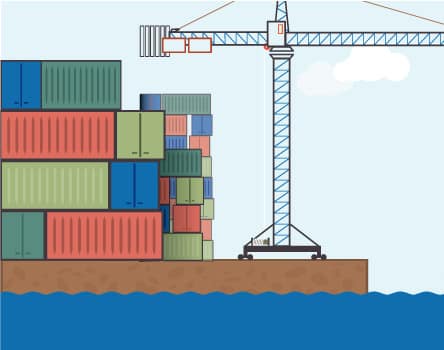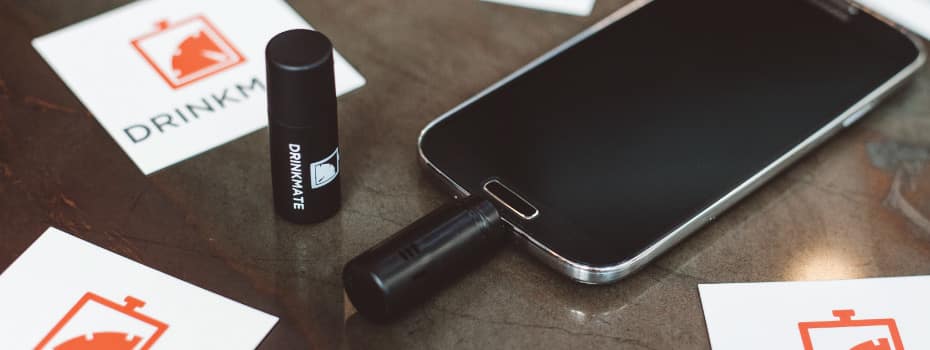Are you thinking about running a Kickstarter, but feeling totally overwhelmed with everything that comes along with it? You know – finding a manufacturer, booking freight, clearing customs, and actually fulfilling orders?
You definitely aren’t alone. It’s a lot to take in!
Do it right, and you can turn your dreams into physical realities, and then get those shipped to hundreds or thousands of people. Do it wrong, and you could be looking at big delays and even bigger bills.
In this video, we’re going to give you an overview of everything that happens after a Kickstarter campaign funds. We’ll talk about a handful of relatively small actions you can take to max out your odds of success, then we’ll start talking about the specific responsibilities you’re going to need to handle.
My name is Brandon, here on behalf of Fulfillrite. If you need help shipping your Kickstarter campaign, go to fulfillrite.com and request a quote. We’ve shipped thousands of Kickstarter campaigns and we’re happy to help you ship yours too. The quote doesn’t cost a thing, so if nothing else, you get some good information about pricing. Link in the description.
But enough self-promotion. Let’s talk about how you actually get a Kickstarter fulfilled.
Setting Yourself Up For Success
Before we get too deep into details today, I want to first talk about some relatively low-effort things you can do that will have a disproportionately large effect on your campaign’s success.
Look, Kickstarter’s been out for almost 15 years so far. We’ve seen massive successes and massive failures, and it’s much easier to know what to do than it was even as recently as, say, 2015 or 2016.
So here are four things what you need to prioritize:
#1: Set realistic expectations.
The first mistake often made lies in setting unrealistic expectations. Whether it’s overpromising on rewards or underestimating delivery timelines, the repercussions can range from simply overtaxing yourself to never shipping at all. Being open, honest, and transparent with your backers builds trust and fosters forgiveness when things don’t go exactly as planned. (And they never exactly do.)
#2: Calculate EVERY cost.
A successful campaign isn’t just about bringing in the funds. You’ve got to use them smartly too. Your budget should reflect all expenses from manufacturing costs and shipping fees to taxes and customs duties. An overlooked cost could easily throw your budget off balance and jeopardize the success of your campaign.
One might assume that high demand equates to instant success, but without proper preparation, it could turn into your biggest challenge. Scaling up operations without compromising on quality or delivery times requires strategic planning and having contingency plans in place.
When in doubt, pad your budget!
#3: Plan out every detail of international shipping.
Every country comes with its unique customs rules and import regulations. Thorough research, a comprehensive understanding of these rules, and a solid international shipping plan are crucial to avoid unexpected additional fees or the uncomfortable scenario of your rewards stuck in customs.
#4: Hire a good fulfillment center if you’re shipping a large volume.
Fulfilling large volumes of orders is another critical area that needs your careful attention. If you’re shipping under 500 orders, you can probably get away with shipping that on your own just fine. But after that, you really should seek out some help. Not only will you be able to ship more quickly and accurately, you might even save some money too.
Just be sure you do your research and pick a good partner!
If you do these four things, you will dramatically increase your odds of success on Kickstarter. There’s no substitute for good plans and good project management, but from what we’ve seen as a company in the crowdfunding industry since its beginning, these are the most common stumbling blocks.
So with that in mind, let’s talk about the first thing you handle after the payments clear…
Manufacturing
Let’s get this out of the way. You need to have a manufacturer lined up before you launch. So everything we’re saying, you need to have 95% of this done before the campaign launches. That way, when you fund, you just tell the people you already know “OK, you can start.”
From the earliest part of your research process, you need to have a “design for manufacturing” process. That means optimizing your product for inexpensive, high-quality manufacturing, ideally in a package that can be shipped affordably as well.
It’s not just about creating your product, but controlling costs from day one. Detailed quotes from manufacturers early on can help you grasp your budget and prevent surprises. Ask your manufacturer for ways to reduce waste and inefficiency—chances are, they’ll have insights you might not have considered. And never underestimate the power of negotiation—it can make the difference between red and black numbers.
One really important figure you’ll want to know for sure – minimum order quantity, or MOQ. The minimum amount of units you can produce at a time will determine how low your Kickstarter goal can go. But you’ll want to get a bunch of different quotes just because you never know exactly how much you’ll raise.
Be explicit and clear about your expectations, and don’t hesitate to ask questions. When you plan around manufacturing time, pad your schedule because delays and changes are common, no matter how well you plan.
As for finding manufacturers, this can be a lengthy process, a bit like dating—you’re looking for a reliable, trustworthy partner who understands and supports your vision. Prioritize capabilities, costs, location, and reputation.
Due diligence isn’t optional—it’s the difference between a smooth production and a nightmare. Consider the benefits of domestic versus international manufacturers, but remember, a lower price doesn’t always mean better.
If you’re not sure where to start, online platforms like Alibaba, Thomasnet, and Maker’s Row can provide a great starting point. Next, you’ll want to order samples, both for quality assurance and to share with influencers or reviewers in advance of the campaign.
You’ll need to invest time and money here, reviewing samples thoroughly and providing clear, constructive feedback. When the samples aren’t up to scratch, don’t be afraid to go back to the drawing board—it’s better to catch issues now than after you have pockets full of other people’s money.
Lastly, don’t forget packaging—it protects your product and it’s really important for marketing. While the focus should be on safety and cost, also think about the user experience, branding, environmental impact, and the cost to ship.
And speaking of cost to ship, you’re going to need to…
Book Freight & Clear Customs
To get your items from a manufacturer to a fulfillment center, and then eventually to backers, you need to book freight and clear customs. Both of these are complex subjects in their own right, so we’ll just cover the basic strategic work you need to do here.
When it comes to freight, you can choose between a broker—an experienced guide to navigate this complex terrain—or a marketplace, which can offer competitive rates but requires more of your input. Both options have merits, and your choice will depend on your unique situation and capacity.
Booking through a freight marketplace involves comparing and evaluating quotes, ensuring services like customs handling are included. If you opt for a broker, remember that finding a reliable one requires vetting—ask about their experience, their networks, their problem-solving abilities. Establishing a good relationship with your broker can make or break your shipping experience.
Next comes cost estimation—factoring in shipping fees, customs duties, and insurance. Keep in mind that package size, weight, and destination can dramatically influence cost. And remember, your Kickstarter campaign’s success—like stretch goals and add-ons—can impact freight costs. That’s why it’s crucial to develop strategies to control these costs and prevent unexpected surprises.
Then you have customs. Understanding customs duties and taxes is non-negotiable. Customs forms, codes, and processes are like a puzzle—each piece must fit perfectly to avoid problems. Common mistakes like incorrect documentation, underestimating costs, and misclassifying goods can result in delays, fines, or seized shipments. But with careful preparation and vigilance, these pitfalls are avoidable.
It’s important to note, you pay customs on the bulk inventory when it’s shipped from your manufacturer to your fulfillment center. Then someone pays customs if your inventory crosses borders again in individual packages. There are few ways that can play out:
- Your goods are so cheap that the customs authorities don’t tax them. (Unless you’re very lucky, this won’t hold true for every package you ship. A lot of countries like the UK have really low thresholds.)
- Some of your backers end up paying the customs charges upon delivery. A lot of backers are used to this, but a lot also hate it.
- You have multiple warehouses and simply ship to backers from their own country or region. That way, you only pay customs when the goods are initially imported.
Which strategy is right for you? That depends entirely on whether you have enough items to justify having warehouses in multiple countries. That’s a subject for another video.
The whole point of this? No matter what you do, price it out in advance. Here is a website you can use to look up which HS code applies to your goods. Here’s another site you can use to plug in that code and estimate your customs burden. Again, keep in mind, stretch goals and add-ons can also impact customs cost too.
I know all this sounds really intimidating, and it definitely is if you’ve never done it before. But – if you take the time to figure it out and make a very clear timetable and budget, a lot of the issues that could derail your campaign can be prevented!
Once your goods arrive in their destination country, there’s one big thing left to do…
Fulfill Orders
No Kickstarter is complete without the final, crucial chapter—order fulfillment. It’s the grand finale, the bridge between your creation and the backers awaiting their rewards. A lot of parts go into this: receiving, warehousing, picking, packing, shipping, and managing returns. And you have a big choice to make – ship on your own or hire help?
Each path has its pros and cons. Self-fulfillment can offer you control and cost-savings, especially for smaller volumes. But it also demands your time, space, and sustained focus. On the other hand, a third-party logistics company (also called a fulfillment center or 3PL), with its specialized expertise and scale, can easily free you up to focus on creating.
We’ve done a whole video on the pros and cons of hiring a fulfillment center, so you can check that out here.
But for this video, here’s some really condensed advice to help you out with order fulfillment.
First, if you’re shipping under 500 orders, do it yourself. More than 500, hire help. It’s hard to find a 3PL that will work with fewer orders than that, and the ones that do won’t be cost-effective. (3PL costs tend to go down, per order, as order volume goes up.)
If you ship on your own, buy discounted postage from a place like ShipStation. Buy a label printer. Get your bulk supplies on ULINE. That will help you streamline your workflow and save money.
If you hire help, vet 3PLs carefully. A great 3PL will make your life a lot easier. A bad one will derail your campaign. Check their case studies and reviews. Ask lots of questions. Make sure they’ve actually shipped Kickstarter campaigns before.
Then get a bunch of different quotes and really price them out. Every 3PL has a different pricing model, so run a bunch of scenarios based on certain assumptions so you can pick a place that balances customer service with a good cost.
Do yourself a favor and price all this out before you ever collect funds for shipping! That way, you don’t charge too little and have to go back for more later. Bonus points if you figure it all out before the campaign.
And one more thing you’ll want to do – make sure you have some kind of returns policy in place. About 1-3% packages break in the mail no matter how careful you or a 3PL is, so you’ll want a standard way to handle this so you can provide good customer service.
When a Kickstarter campaign funds, a whole chain reaction takes place. Once funds clear, manufacturing starts. When that manufacturing run ends, the inventory is then freight shipped across the world. Along the way, it must clear customs. Then, ultimately, it will go to either a fulfillment center or a Kickstarter creator’s home or office to be shipped to backers.
Thousands of Kickstarters do this every year, including first-timers! As complicated as this is, it’s still absolutely in your ability to do. You just have to think about it in advance, plan carefully, and make sure you have enough money set aside to make it all happen.
If you need help shipping your Kickstarter campaign, go to fulfillrite.com and request a quote. We’ve shipped thousands of Kickstarter campaigns and we’re happy to help you ship yours too. The quote doesn’t cost a thing, so if nothing else, you get some good information about pricing. Link in the description.
If you enjoyed this video, please take a moment to like and subscribe. Don’t forget to slap some postage on that bell so we can express ship new videos to you as soon as they drop. And last but not least, if you have any questions, leave a comment below. I will personally answer as many as I can.
Thanks for watching!
You’ve done everything by the book. Your Kickstarter campaign is almost ready to launch.
You made a great product. Built an audience. Set up a campaign page.
But how do you ship it?
We put this checklist together to help you get started. It's free.




